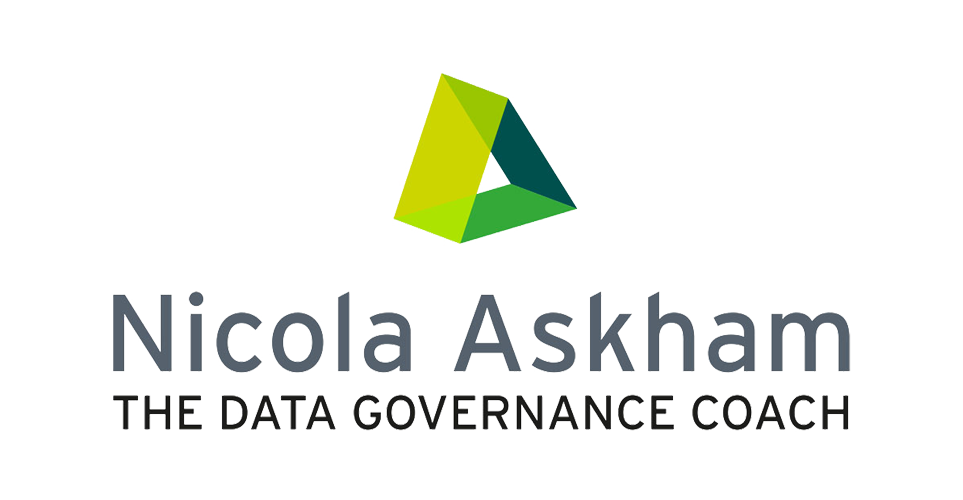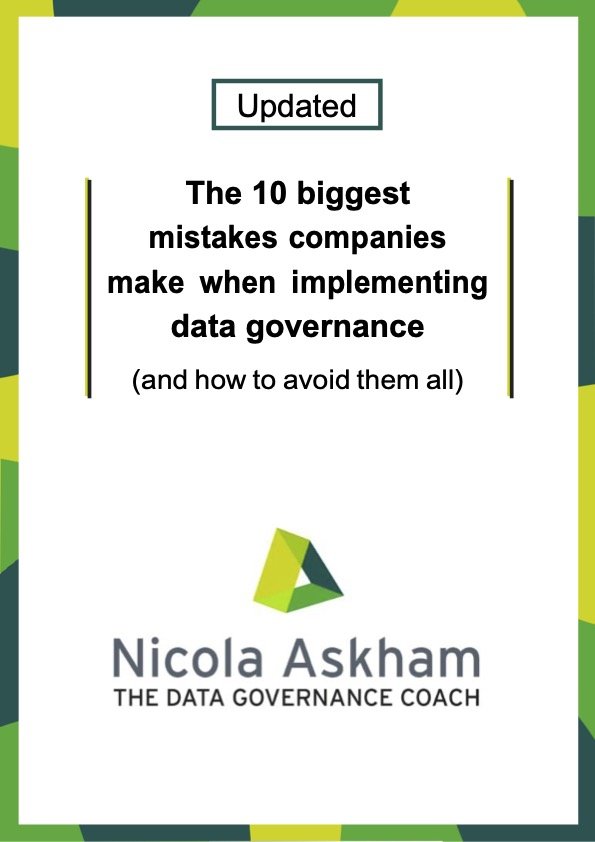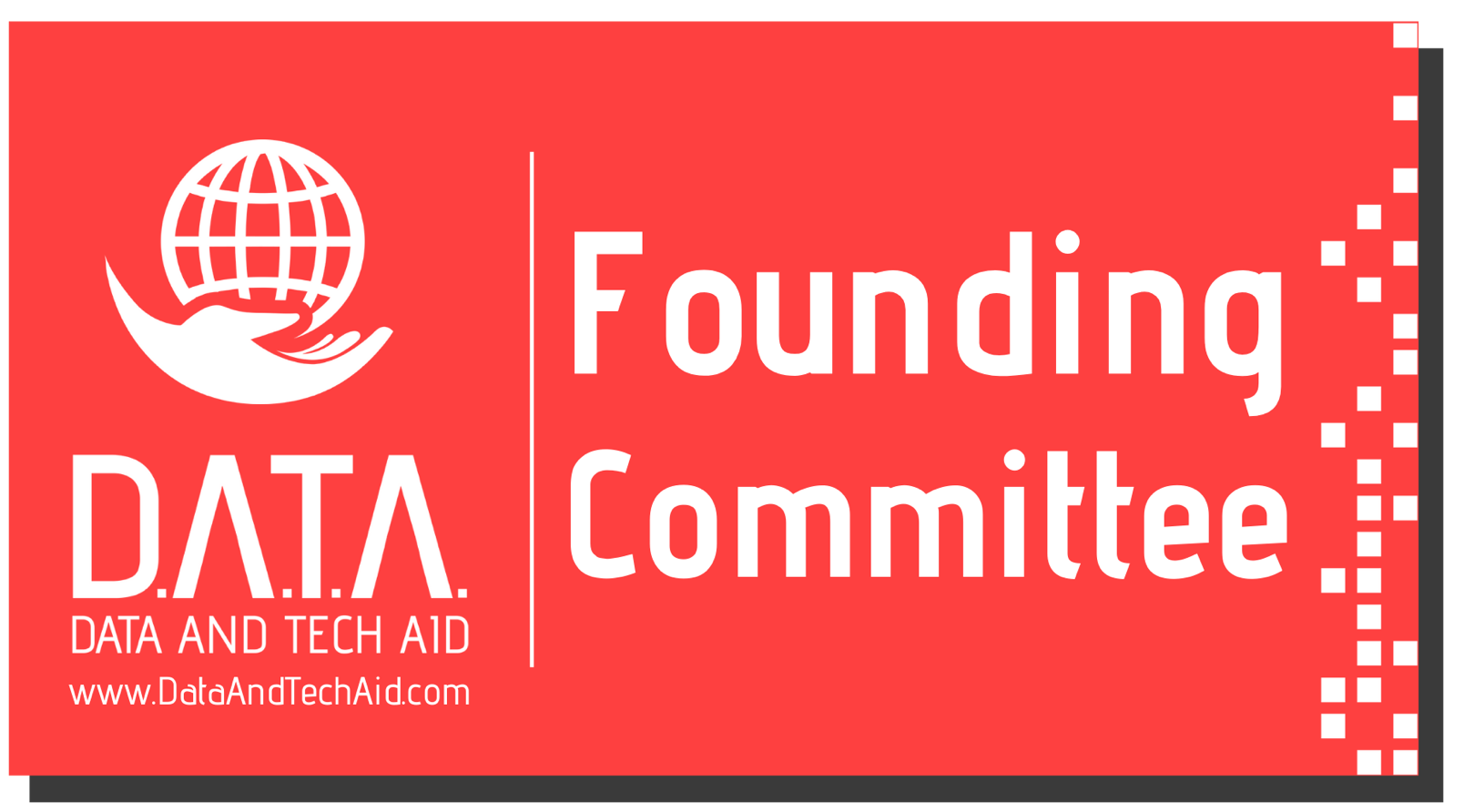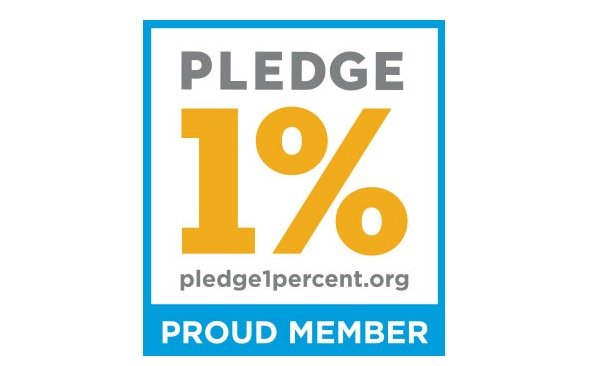Data Governance Interview with Lara Gureje
/Lara Gureje (pronounced ‘gurej’) is the Founder & CEO of DatOculi LLC, a Data Governance & Stewardship Consultancy, Coaching & Training firm with its headquarters based in San Francisco.
Lara is a renowned Data Governance & Stewardship Advocate with passion for the heavily regulated industry. She is a seasoned Data Management veteran with over 20 years of experience, with 11 years experience working for the Big 5 consulting firms like Coopers & Lybrand, PWC and IBM. Lara has recently launched her own Consultancy offering where she helps organisations mature their data management practice whilst building successful cultural transformation, and fostering ethical use of data for competitive edge and insightful analytics.
How long have you been working in Data Governance?
I’ve been working in Data Management for over 23 years in total and would say the last 6+ years is where I’ve primarily focused on Governance around data holistically.
Some people view Data Governance as an unusual career choice, would you mind sharing how you got into this area of work?
I actually consider myself lucky on this, for me and for those who have worked with me over the years as I journeyed through my career. Data Governance is a natural fit for my personality and my passion. I think I had stepped into the role long before they knew what to call it. I kicked off my career in Europe in software development & coding. That career did not last long before my strength for data management and analytics took centre stage and that was what opened the opportunity for me to be brought over to the USA by PWC at the time.
I’m people-centric, with a great collaborative and community-building skill set. Working with people is very natural for me as I’m able to engage people quickly where they are and journey along with them, to where they desire to be. Data Governance is a people-centric discipline that fits very well into my personal DNA. To that effect, I was nominated into the role when the opening came up in my last company, after so many failed attempts of bringing someone in, to successfully champion the governance adoption.
In a nutshell, Governance & Stewardship around Data has given me the rare opportunity to ‘make my vocation my vacation’.
What characteristics do you have that make you successful at Data Governance and why?
I think for you to be successful at Data Governance, you obviously need to be tooled, trained and equipped well for success, this is very fundamental. However, there are some things that have to be part of your natural DNA to be successful in this discipline. I’ll call out a few that has worked for me over the years in my delivery:
Coming from a position of pain is always a great asset for a Data Governance Leader and I can attest that this has helped me a lot. What I mean by that is that you need to be intimate with what poor data quality means and its impact on an organisation.
People telling you the horror stories in their data is not good enough. I believe, having been at the receiving end of the lack of governance, that kept me up at night, positioned me to be a better stakeholder to champion a successful adoption. For example; my career journey, through the data management maturity and evolution over the years, started with development through Data Acquisition, Integration, Management, Analytics and Distribution. This career journey in hindsight definitely positioned me for Governance & Stewardship in a unique way than many.
The issues around missed opportunities and pains around data quality became very personal to me by the time I assumed full-time leadership in Data Governance.
People skills and a great collaborative spirit is also a great asset I was able to tap into. I’ve often referred to this as a personality fit, to work for the United Nations to resolve global issues between nations with different ideologies from one another. Getting them to sign the peace accord and having this personality has to come from a deep place where its more of an art than a science.
Rightfully messaging a good understanding that Governance is a journey and not a destination is also very important. Knowing how to start small with quick-wins and build upon success is always built into my framework. This always helps to set the right expectations and build workable building blocks for success in your deliveries.
Knowing to continuously build advocacy and woo community of allies to help accelerate Governance adoption journey is also something I like to build into my rhythm. Governance is a cultural transformation, the more allies to help evangelise your mission, the better it becomes and the quicker your organisation will start seeing the ROI.
Are there any particular books or resources that you would recommend as useful support for those starting out in Data Governance?
Books are good to read, but I’m one of those that believe practical Governance is what we need to mature this discipline. There are lots of books out there and cookbook ideas, unfortunately, do not work for real-life governance. If you’re going to read a book, I'll recommend, picking up something that shares a case study of what success or failure looks like. No two Governance adoptions are exactly the same as the uniqueness of each organisation, their culture and goals which will drive what governance means to them. Hence, I advocate practical Governance, not something that looks good on paper and unrealistic for your setup.
What is the biggest challenge you have ever faced in a Data Governance implementation?
The biggest challenge I’ve seen in most governance adoption always revolves around the foundational gaps. i.e. poor understanding of what Governance is; lack or weakness of executive buy-in; internal politics; poor delivery expectations; lack or inadequacy of funding and poor leadership.
Is there a company or industry you would particularly like to help implement Data Governance for and why?
Any highly regulated industry that has invested heavily in regulatory compliance over the years, trying to leverage their investment in other initiatives, like MDM, GDPR and CCPA to pivot from compliance led data infrastructure to profit-led data infrastructure.
OR other organisations that are simply trying to drive their business growth through analytics (AI/ML). I’d like to help them position Governance around their input data to optimise ROI in their delivery.
What single piece of advice would you give someone just starting out in Data Governance?
First and foremost, you have to be passionate about data & people.
Don’t begin with tools - understand what Governance is all about. A tool is an enabler that has its place once you understand what governance is about. You’ll know where and when to engage the right fitness of tools as you go on.
Get trained on Data Governance and Stewardship, find a coach or a mentor.
Follow thought leaderships and read case studies of governance implementations.
Attend 1 or 2 yearly conferences to keep up-to-date with trends.
Be patient with yourself.
Finally, I wondered if you could share a memorable data governance experience (either humorous or challenging)?
Not sure if I’ll call it humorous somewhat, but I’ve often found it interesting that a lot of organisations still fail to realise the inherent value of investing in Governance around their data asset. It's probably the best investment they could ever make to realise all of their other strategic goals.
But, they have no problem investing in the latest and greatest technologies to work the magic on their competing demands, MDM/KYC, GDPR, CCPA, AI and other. This, unfortunately, is evident in the number of professed ‘magic tools’ out there lining up to help organisations ‘mask’ their underlining data quality issues to deliver some of these demands. Hardly a week goes by where I don’t get solicitation of companies requesting help and assistance in tool selection for one data need or the other. I find this somewhat ironic as most of these organisations have unfortunately learnt to live with their ‘chronic poor data quality’. They have bought into the promissory note of vendors telling them they don’t have to worry about the state of their data as their tool has the ‘magical whip’ to ‘bandage the noise’ in their data.
The reality is that poor quality data does not magically disappear. If you failed to create a governed and trusted environment around your data, it will continue to hunt you. You will not be able to realise the full potential of your innovative investments in all other data initiatives until you address this.
















